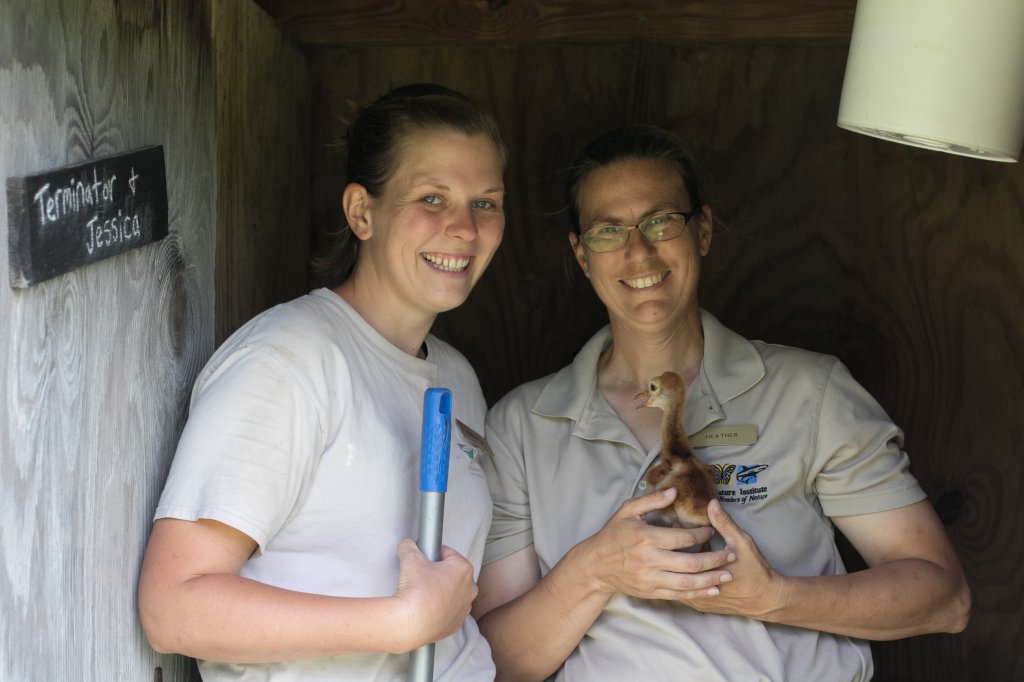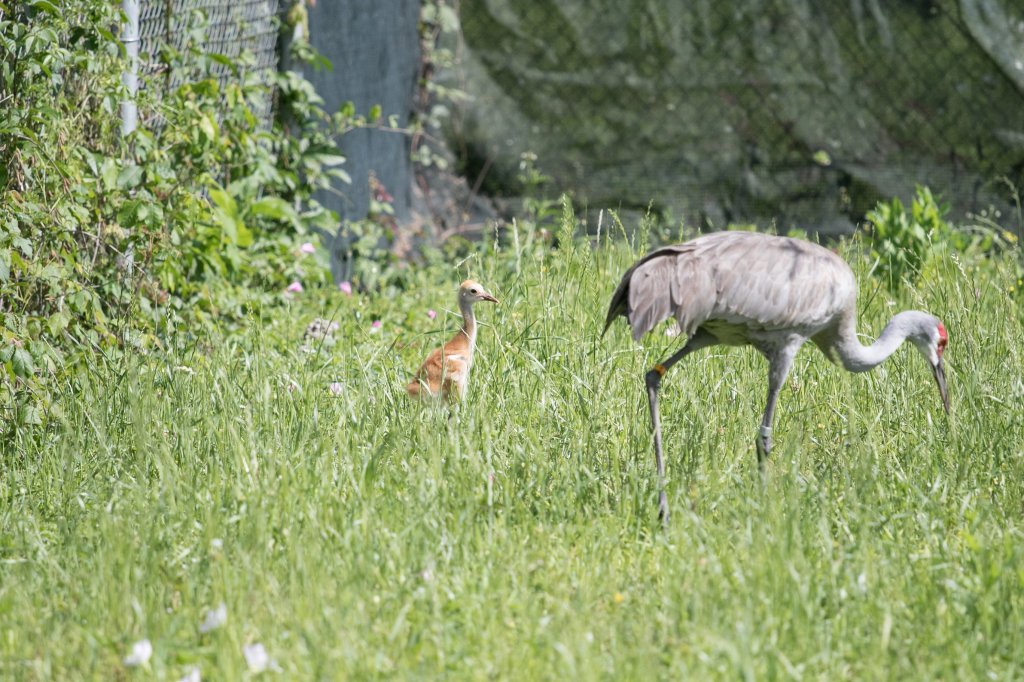NEW ORLEANS – The first three Mississippi Sandhill Cranes of what is hoped to be many more this season have hatched at the Freeport-McMoRan Audubon Species Survival Center. Mississippi Sandhill Cranes are a critically-endangered species that was on the brink of extinction nearly thirty years ago.
Audubon hopes that following six month of intense monitoring by their staff, the chicks will be released into the Mississippi Sandhill Crane National Wildlife Refuge Center in Gautier, Mississippi. The unique conservation program has resulted in a stabilized population of cranes along the Mississippi Gulf Coast.
In 1975, fewer than 35 Mississippi Sandhill Cranes existed when the U.S. Fish and Wildlife Service established the refuge in Mississippi, the first ever created under the Endangered Species act of 1973. The partnership with Audubon began in 1995 and since then Audubon has released more than 200 birds. Today, about 65% of the wild crane population was hatched and raised at Audubon.

“The first three chicks we had hatch this year came from eggs laid by wild birds in the Mississippi Refuge,” explained Michelle Hatwood, Animal Curator at the Survival Center. “U.S. Fish and Wildlife Service (USFWS) officers occasionally send us a few eggs collected from wild nests each year because the chicks have a much higher survival rate being raised in our care for the first 6 months. We are lucky to have such good crane foster parents!”
Staff at the Species Survival Center are expecting several eggs to hatch this year that were laid by birds living at the Audubon facility. This is promising considering that hatching season has just begun!
Currently, the refuge population in Mississippi is around 120 to 130 birds. The goal is to help create a self-sustaining population of birds in the wild that is no longer reliant on captive breeding.




























